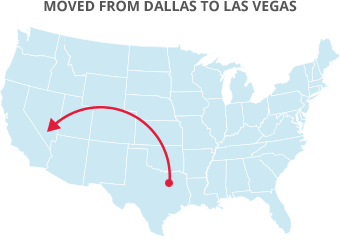


What You'll Need
Preparing for Icey Sidewalks
The first thing to remember is that icy sidewalks, driveways, and streets are dangerous enough under normal conditions but become much more problematic when you're moving heavy boxes or furniture and can't watch your feet or step as carefully. If it's icy where you live, shovel the walkways as thoroughly as possible and salt the entire walk between your front door and the back of the moving truck. When you're done, pack up your shovels and bag of salt in the trunk of your own car or make sure they are packed last in the truck. This will ensure that you can clear driveways and sidewalks at your destination as well.
Protecting Your Floors
The second ice and snow related concern is the state of your floors. When people are tromping through ice or snow to get into your home, that slush will stay on their shoes and can be tracked all over your nice clean floors or, worse, soak dirty slush into the carpets. To protect both the home you're leaving and the one you're moving into, use tarps and plastic sheeting to keep ice-covered shoes off your floors.
Planning for Icy Roads
The next consideration is the fact that the roads you'll be taking are likely to also be covered in ice and possibly people traveling for the holidays. Expect heavy traffic, accidents, backups, and all manner of delays. This means that if you have a moving deadline, you'll want to leave early to ensure that you have an extra few days to both make the trip and get everything unloaded in the snow.
For efficiency and safety's sake, you may also want two or three alternate routes or an app ready to help you plan detours just in case there's a bad traffic or weather situation on your primary planned route.
Landing Somewhere Warm
After a long drive in the moving truck or your own car in a caravan with your moving trucks, you're going to want to warm up in the new home pretty fast. This means that any delays getting the house open and the heater own can be problematic, especially if the utilities aren't ready yet. Make sure to have water, electricity, and gas if relevant turned on at the new place. Try to arrive ahead of the trucks or ask a local contact to access the house and get it warming up before the convoy shows up and starts unpacking.
Take Care of Yourself and Your Movers
Moving in the cold is hard work with a combined risk of freezing, overheating, and getting dangerously dehydrated as your body loses moisture to the cold. After you get the heater started up, consider making a big pot of hot tea or cocoa along with a pitcher of room-temperature (not freezing cold) water. Keep yourself hydrated and warm with cups of tea and pass mugs or a thermos around for the movers and any friends who are lending a hand. This way, everyone stays energetic and unlikely to get too tired or catch a cold during the process.
Moving in the winter is tricky business, but something you can easily accomplish with a little forward planning and consideration for everyone involved. By making sure all walkways have plenty of traction, the destination home is ready to be hospitable, and everyone drinks warm tea, you should be able to get all your possessions safely from one icy home to another.

